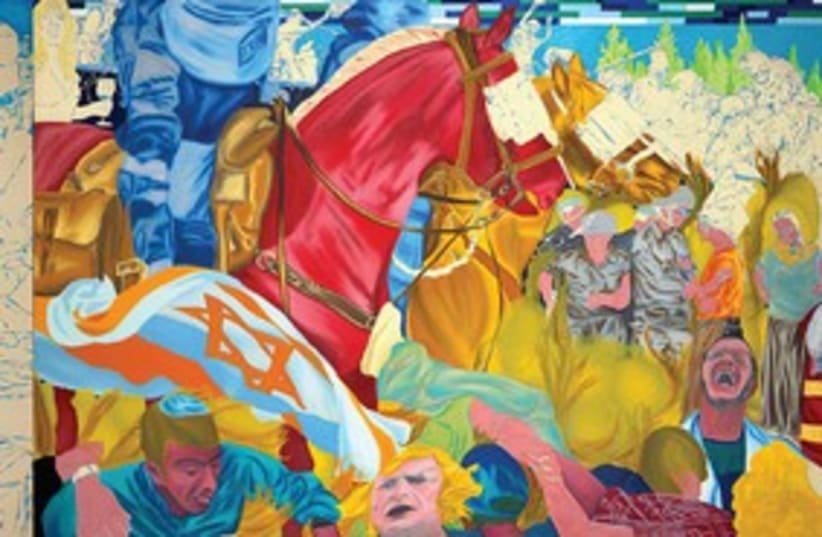Amona, a triptych painting portraying the evacuation of an Israeli settlement, is one of the works on display. It took a year and a half to complete, and according to Orly, it is the painting he most wants people to see.“Amona is something I don’t want people to forget, it is something to analyze, digest and remember, and not put aside.”Like Pablo Picasso’s 1937 piece Guernica, depicting the bombing of the city by the same name during the Spanish Civil War, and from which Orly took inspiration, Amona reflects the story of division among brothers, while showing the world the lengths to which Israel is willing to go to achieve peace.“The events at Amona have had a great effect on the Right for many years, and we can see their political influence until today.”On the other hand, Orly notes, “The left doesn't know how to cope with statements made by the right wing, shouting 'Nazis' at the police and army."The painting, as do the other works in the show, depicts a highly emotional issue. With no obvious rights or wrongs, Orly explains that he strives to simply create discussion.“He identifies the artist as a type of journalist,” says Galit Semel, the show’s curator, of Orly. “This means the political reality is delivered by him when he puts it on canvas.”The name “Political Operas” was selected, according to Semel, because as a regular opera is a musical drama, Orly’s pictures reflect a political drama.In addition to politics, the exhibition’s pieces reflect inspiration borrowed from art greats such as Picasso, Goya and Rodin, and Orly says he hopes to bring the discussion not only to the realm of politics, but also into the realm of art itself. Since the opening of the exhibition, some who have attended have made reference to Manga and to the late neo-expressionist Jean Michel Basquiat, which Orly says he finds appealing.“The idea that people see street painting in this exhibition is a very big compliment to me,” he says.Still, Orly emphasizes that he is after something unique.“I’m not trying to imitate any other artist. I’m trying to get a discussion started that goes through different artists and different years of art, trying to find themes that will influence Israelis for many years to come, and the discussion that I picked is the local politics of Israel.”
The exhibition will be showing through January 21 at The Tel Aviv Artists’ House, 9 Alharizi Street, Tel Aviv. For more information call (03) 524-6685.
